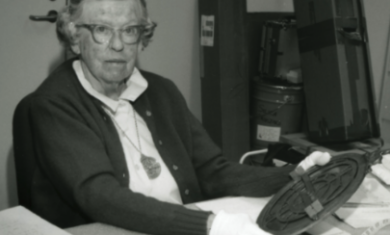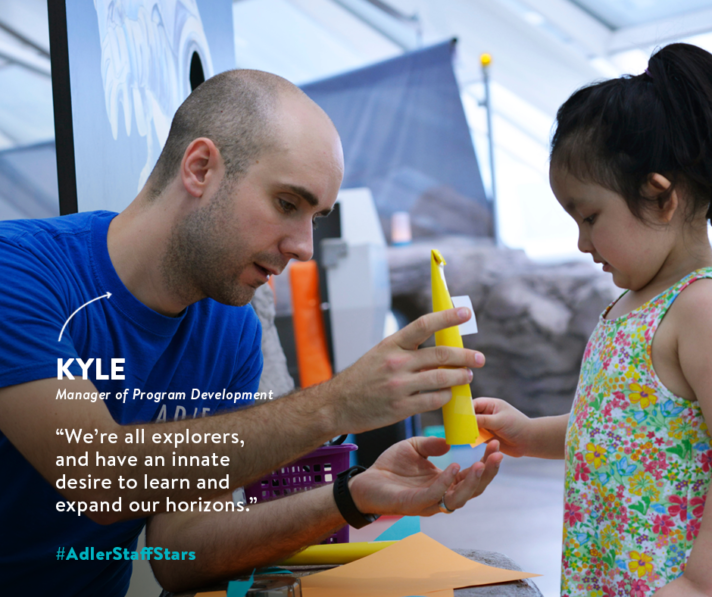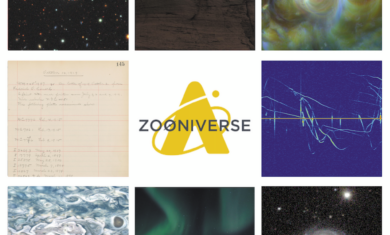Welcome to the Neighborhood
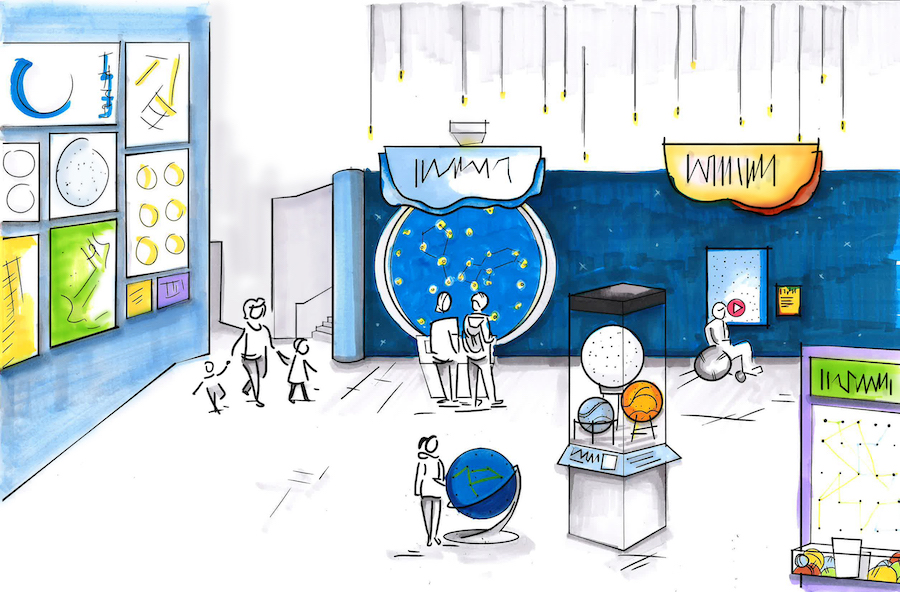
Header Image: Early artistic representation of a part of the Adler Planetarium’s new exhibit, Chicago’s Night Sky.
If you traveled to a dark-sky park on a clear night to do some stargazing, you’d probably be able to see around 4,500 stars with your naked eye. On a clear night in Chicago, that number is more like 35. Here in the city, the bright lights that illuminate our buildings and streets also scatter in the atmosphere overhead—a phenomenon astronomers call “light pollution”—and make many celestial objects invisible to us.
But a little light pollution has never stopped Chicagoans from gathering under the night sky, taking in what we can, and learning about the Universe together. In fact, Chicago has long been home to a vibrant community of stargazers, educators, artists, researchers, and storytellers inspired by what they saw in the sky. And the story of our city’s relationship to the stars is still being written. You can step inside that story—and find yourself in it—in the Adler’s newest original exhibition, Chicago’s Night Sky.
“We want people to feel that their neighborhood around them includes the sky above them,” says Michelle.
Michelle Nichols, the Adler’s director of public observing, has been helping city dwellers see their sky in a different way for years. As the founder and leader of ’Scopes in the City, she brings telescopes and volunteers to public spaces all over Chicagoland and watches people gasp as they lay eyes on Saturn (or a sunspot or the craters on the Moon) for the first time. Michelle was a member of the core development team for Chicago’s Night Sky, and she says its focus on people and personal connections to the sky can recreate those “Saturn moments” for museum guests.
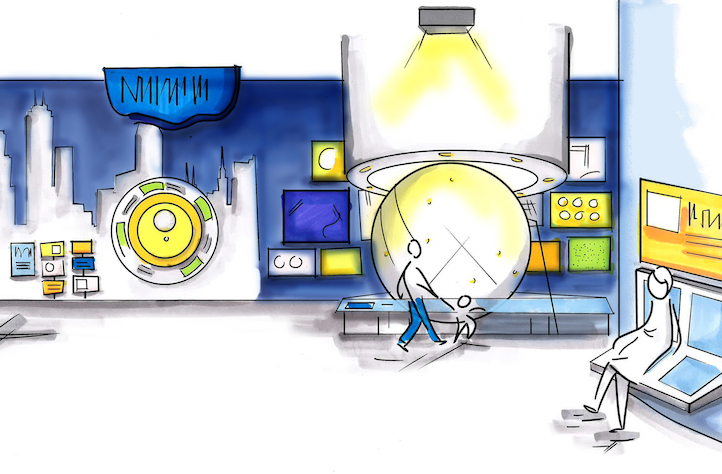
Image: Early artistic representation of a part of the Adler Planetarium’s new exhibit, Chicago’s Night Sky, featuring a refurbished Atwood Sphere.
The exhibition celebrates Chicago stargazers past and present, professional and amateur. There’s Wallace Atwood, whose century-old, 17-foot steel sphere still whirls around friends and families and teaches them about the stars in its home at the Adler. And Frederick J. Brown, a visual artist from Chicago’s South Side, whose 1977 painting, Milky Way, found inspiration in the stars. There’s a group of local teenagers currently conducting the first-ever light-pollution survey of Chicago and another who started a public awareness campaign to help their neighbors understand what light pollution is and how they can work together to reduce it.
Every detail of the new exhibition was designed to make people feel at home in the city and in the sky. Orilla Fetro, the Adler’s exhibit design lead, says the team took care to represent different parts of the city. “We’re not just doing the downtown skyline,” she says. “We’re doing the skyway to represent the South Side, or a bungalow that might represent the West Side.”
Throughout the space, guests will also find interactive elements that may spark their creativity or get them thinking about the ways people can change the sky we see if we work together.
Whether your night sky is clear or overcast, flooded with city lights or perfectly dark, you have an important role to play in the human traditions of looking up, sharing stories, and solving cosmic mysteries. Chicago’s Night Sky will bring you the story so far. Come help us write the next chapter.




